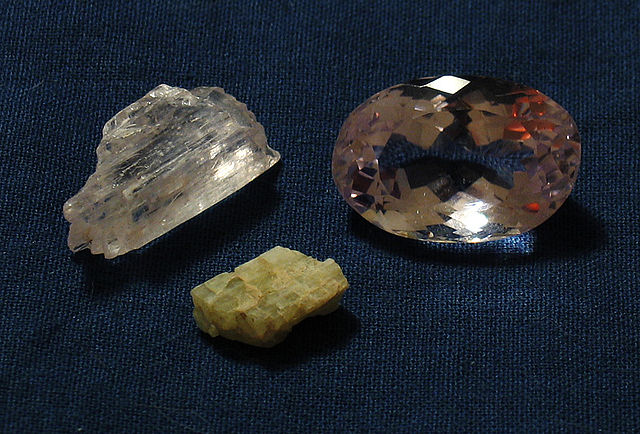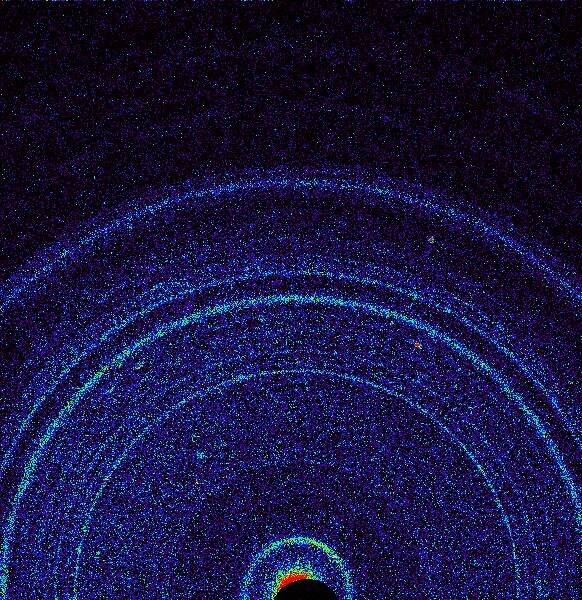Spodumene is a pyroxene mineral consisting of lithium aluminium inosilicate, LiAl(SiO3)2, and is a commercially important source of lithium. It occurs as colorless to yellowish, purplish, or lilac kunzite (see below), yellowish-green or emerald-green hiddenite, prismatic crystals, often of great size. Single crystals of 14.3 m (47 ft) in size are reported from the Black Hills of South Dakota, United States.
Walnut Hill Pegmatite Prospect, Huntington, Hampshire County, Massachusetts, U.S. (size: 14.2 × 9.2 × 3.0 cm)
An almost colorless kunzite crystal (upper left), a cut pale pink kunzite (upper right) and a greenish hiddenite crystal (below) (unknown scale)
Kunzite, Nuristan Province, Afghanistan
Hiddenite from Araçuaí, Minas Gerais, Brazil
The pyroxenes are a group of important rock-forming inosilicate minerals found in many igneous and metamorphic rocks. Pyroxenes have the general formula XY(Si,Al)2O6, where X represents calcium (Ca), sodium (Na), iron or magnesium (Mg) and more rarely zinc, manganese or lithium, and Y represents ions of smaller size, such as chromium (Cr), aluminium (Al), magnesium (Mg), cobalt (Co), manganese (Mn), scandium (Sc), titanium (Ti), vanadium (V) or even iron. Although aluminium substitutes extensively for silicon in silicates such as feldspars and amphiboles, the substitution occurs only to a limited extent in most pyroxenes. They share a common structure consisting of single chains of silica tetrahedra. Pyroxenes that crystallize in the monoclinic system are known as clinopyroxenes and those that crystallize in the orthorhombic system are known as orthopyroxenes.
Pyroxene (diopside) crystals from Afghanistan
Structure of pyroxene looking along the silica chains. "I-beams" are outlined in green. Silicon ions are oversized to emphasize the silicon chains.
First X-ray diffraction view of Martian soil – CheMin analysis reveals feldspar, pyroxenes, olivine and more (Curiosity rover at "Rocknest")
A thin section of green pyroxene








